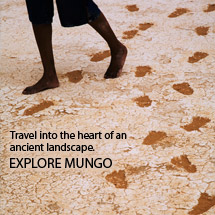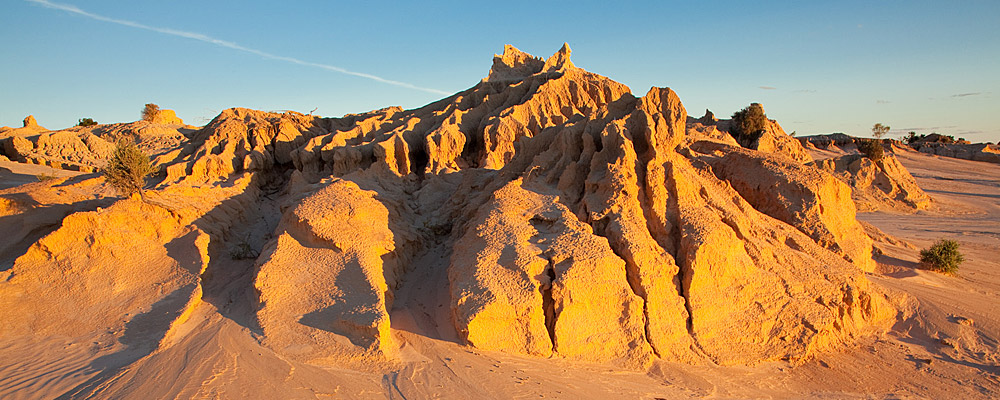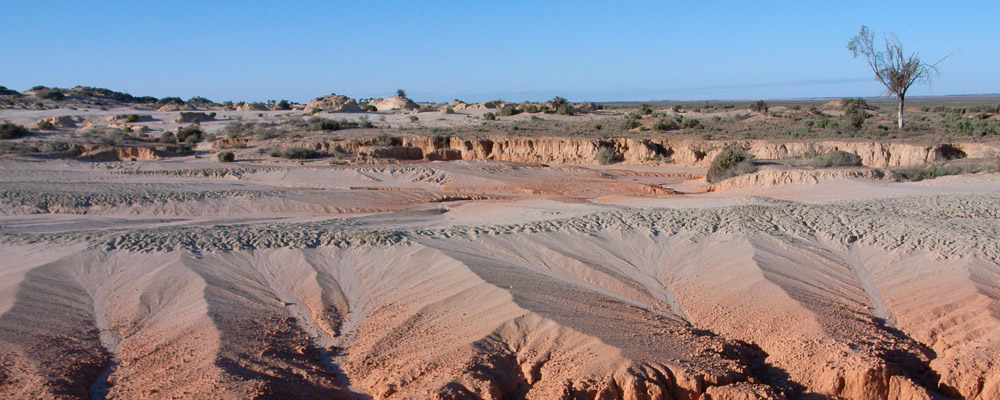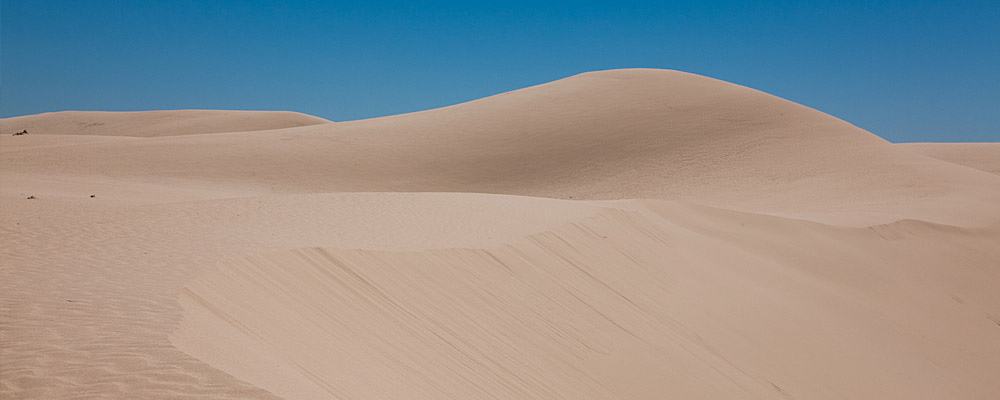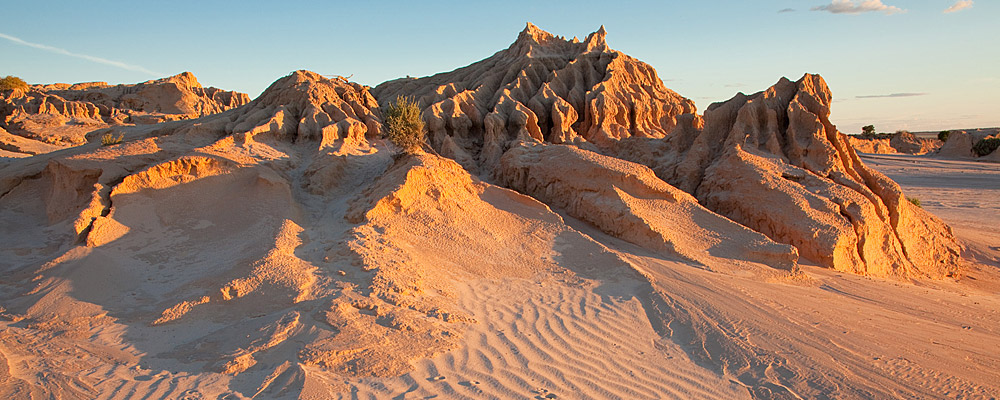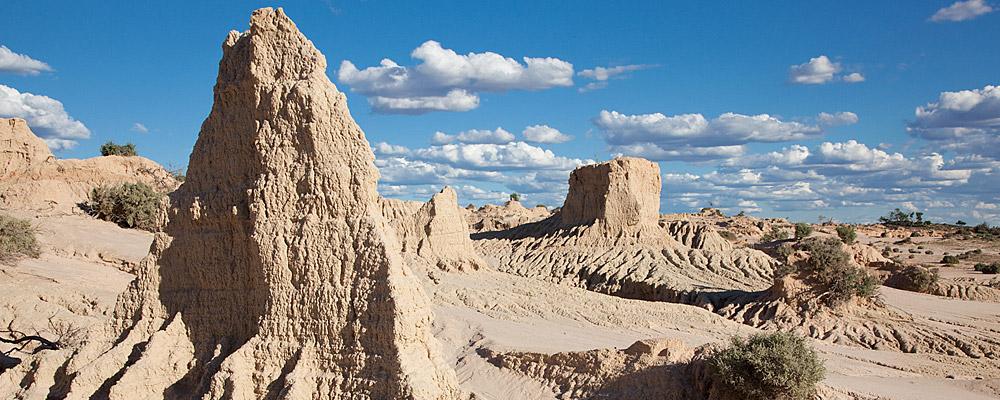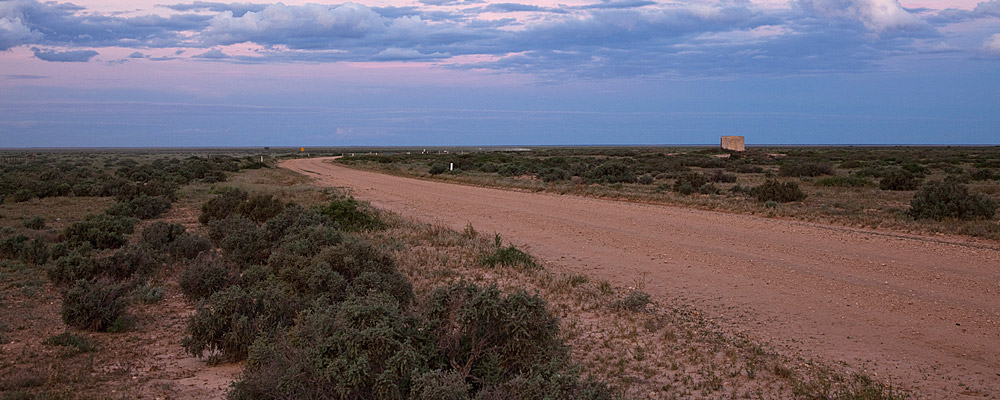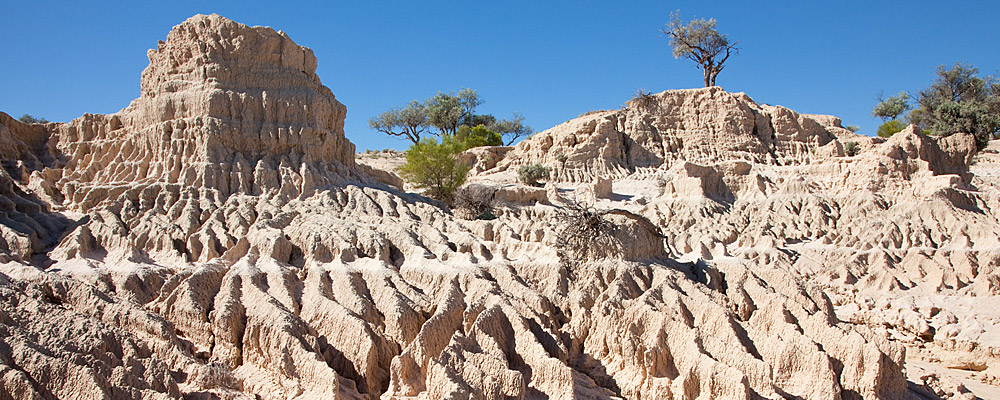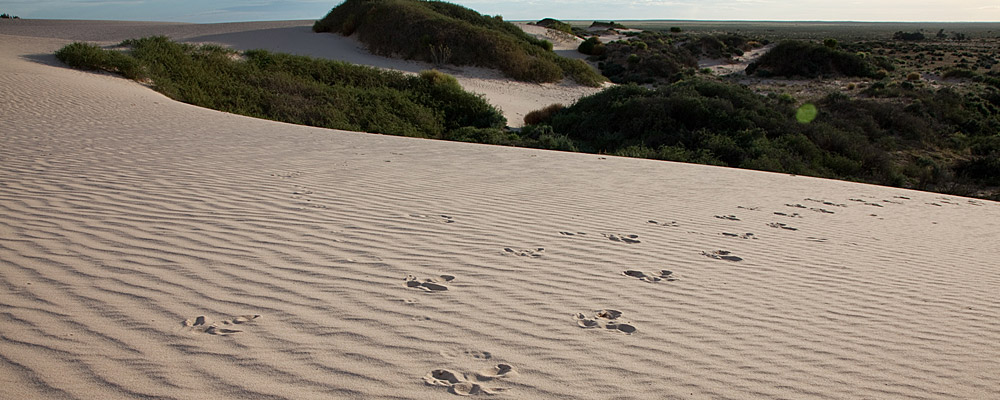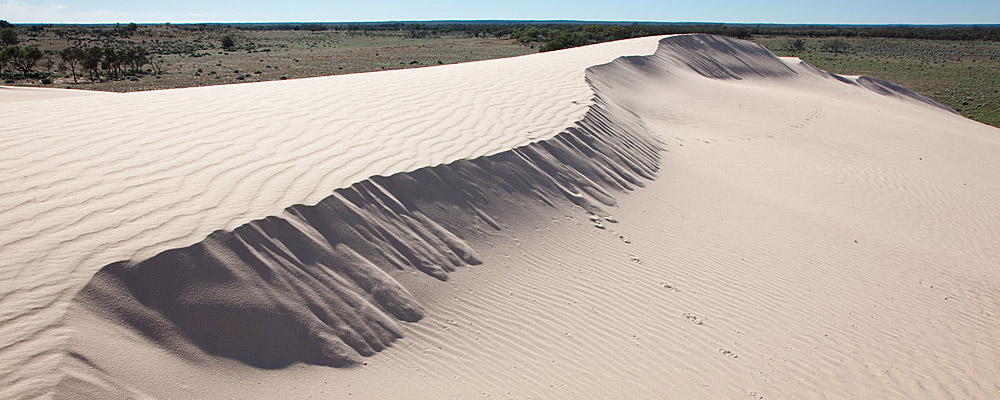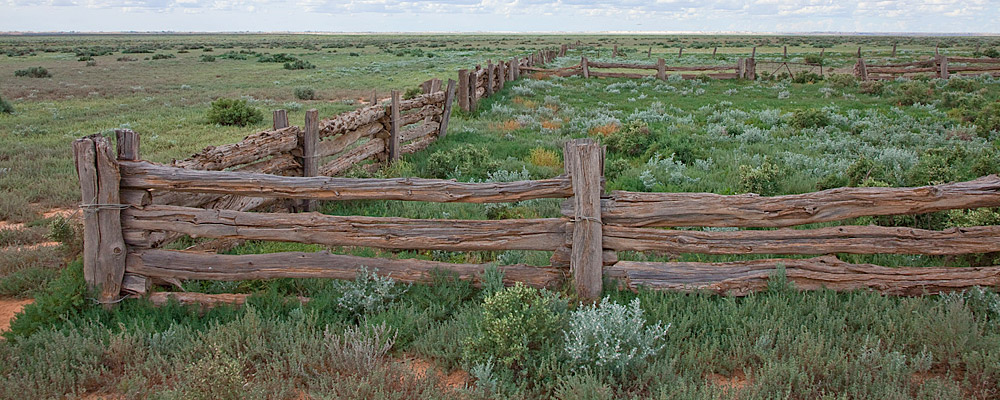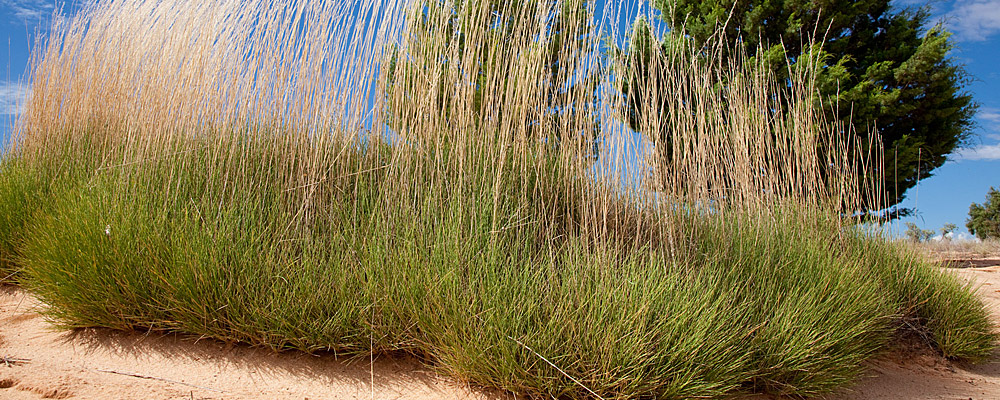Understand Mungo
Mungo Archaeology

The people of Lake Mungo and the Willandra Lakes have a long past that is important to the whole world.
When Mungo Lady and Mungo Man turned up some 40 years ago they rocked the scientific community. They have been dated to 42,000 years old - the oldest human remains in Australia and some of the oldest modern humans in the world outside Africa.
And when 20,000 year old footprints of the Willandra people were found in 2003, they also rocked archaeological records. They are the only Pleistocene footprints in Australia and the most numerous yet found anywhere in the world.
These finds are remarkable enough, but perhaps the most important thing about the Willandra Lakes is how such discoveries can be connected with the landscape and climate. Places like Mungo are rare, where changes in an environment can be matched with how people have lived there in a continuous record across vast ages.
The scientific evidence shows that Aboriginal people have lived at Mungo for at least 45,000 years. This is the dated age of the oldest stone artefacts that have been found so far, and represents a lineage that extends back over some 2000 generations. But many Aboriginal people say they have been here even longer, reaching back into the Dreamtime, perhaps forever. The long history of occupation at Mungo has combined with ideal conditions for the preservation of some types of relics to create an archaeological treasurehouse.
Today, the Paakantji, the Mutthi Mutthi, the Ngiyampaa and all Aboriginal people hold their Willandra ancestors and their story as precious gifts to be shared with all people.
The traditional tribal groups welcome you here to explore some of the archaeological stories of Lake Mungo and the Willandra Lakes.
